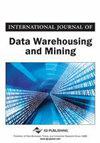Enhancing Data Quality at ETL Stage of Data Warehousing
IF 0.7
4区 计算机科学
Q4 COMPUTER SCIENCE, SOFTWARE ENGINEERING
International Journal of Data Warehousing and Mining
Pub Date : 2021-01-01
DOI:10.4018/IJDWM.2021010105
引用次数: 2
Abstract
Data usually comes into data warehouses from multiple sources having different formats and are specifically categorized into three groups (i.e., structured, semi-structured, and unstructured). Various data mining technologies are used to collect, refine, and analyze the data which further leads to the problem of data quality management. Data purgation occurs when the data is subject to ETL methodology in order to maintain and improve the data quality. The data may contain unnecessary information and may have inappropriate symbols which can be defined as dummy values, cryptic values, or missing values. The present work has improved the expectation-maximization algorithm with dot product to handle cryptic data, DBSCAN method with Gower metrics to ensure dummy values, Wards algorithm with Minkowski distance to improve the results of contradicting data and K-means algorithm along with Euclidean distance metrics to handle missing values in a dataset. These distance metrics have improved the data quality and also helped in providing consistent data to be loaded into a data warehouse.提高数据仓库ETL阶段的数据质量
数据通常从具有不同格式的多个数据源进入数据仓库,具体分为三组(即结构化、半结构化和非结构化)。使用各种数据挖掘技术来收集、提炼和分析数据,从而导致数据质量管理问题。当数据受ETL方法约束时,就会进行数据净化,以保持和提高数据质量。数据可能包含不必要的信息,并且可能具有不适当的符号,这些符号可以定义为虚拟值、隐值或缺失值。本文改进了使用点积的期望最大化算法来处理隐式数据,使用Gower度量来确保虚拟值的DBSCAN方法,使用Minkowski距离来改善矛盾数据的结果的Wards算法和使用欧几里得距离度量来处理数据集中缺失值的K-means算法。这些距离度量提高了数据质量,还有助于提供加载到数据仓库中的一致数据。
本文章由计算机程序翻译,如有差异,请以英文原文为准。
求助全文
约1分钟内获得全文
求助全文
来源期刊

International Journal of Data Warehousing and Mining
COMPUTER SCIENCE, SOFTWARE ENGINEERING-
CiteScore
2.40
自引率
0.00%
发文量
20
审稿时长
>12 weeks
期刊介绍:
The International Journal of Data Warehousing and Mining (IJDWM) disseminates the latest international research findings in the areas of data management and analyzation. IJDWM provides a forum for state-of-the-art developments and research, as well as current innovative activities focusing on the integration between the fields of data warehousing and data mining. Emphasizing applicability to real world problems, this journal meets the needs of both academic researchers and practicing IT professionals.The journal is devoted to the publications of high quality papers on theoretical developments and practical applications in data warehousing and data mining. Original research papers, state-of-the-art reviews, and technical notes are invited for publications. The journal accepts paper submission of any work relevant to data warehousing and data mining. Special attention will be given to papers focusing on mining of data from data warehouses; integration of databases, data warehousing, and data mining; and holistic approaches to mining and archiving
 求助内容:
求助内容: 应助结果提醒方式:
应助结果提醒方式:


